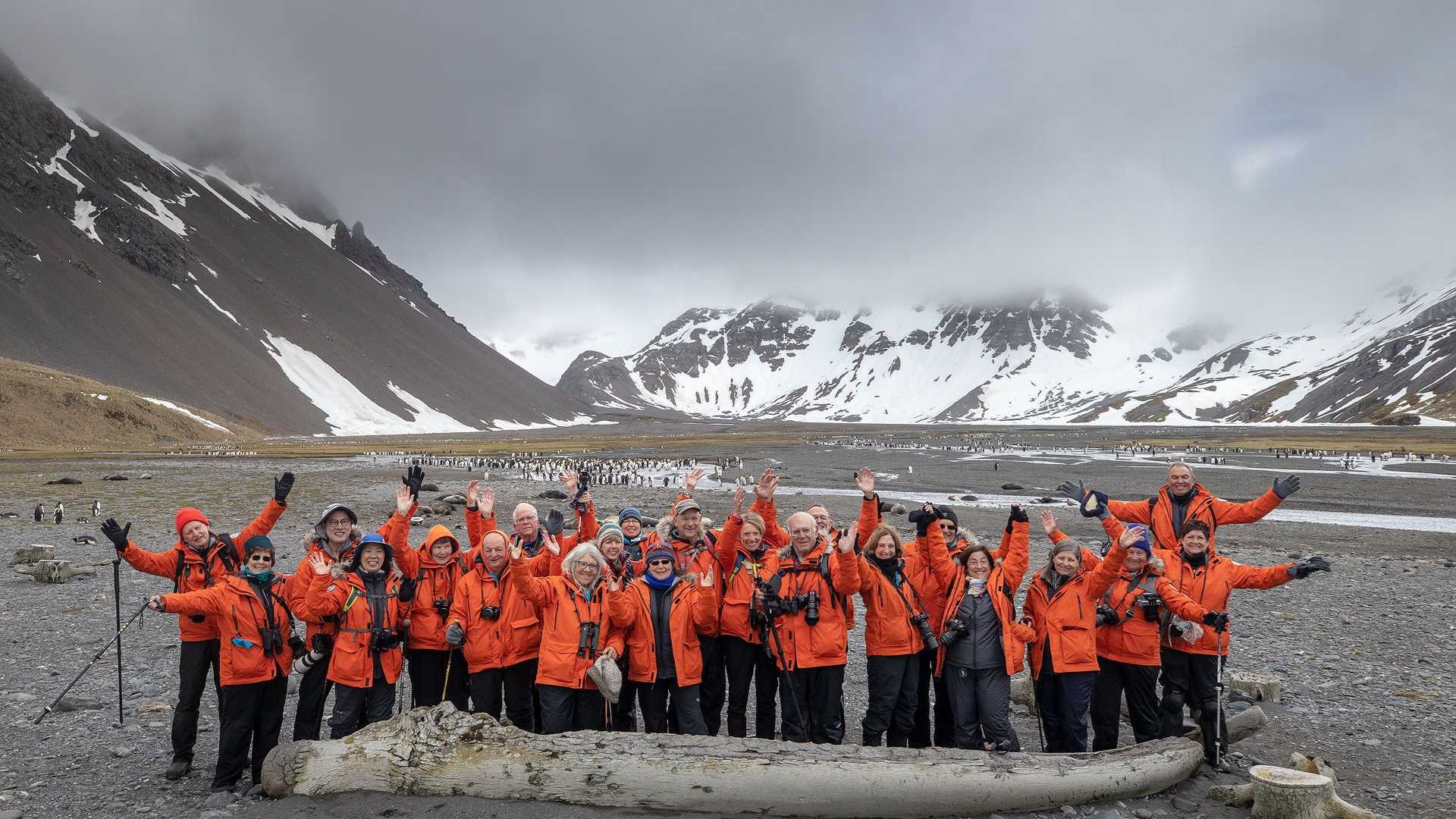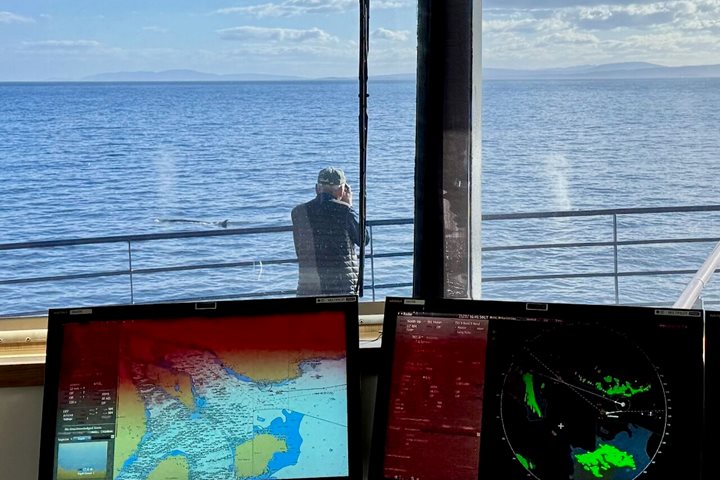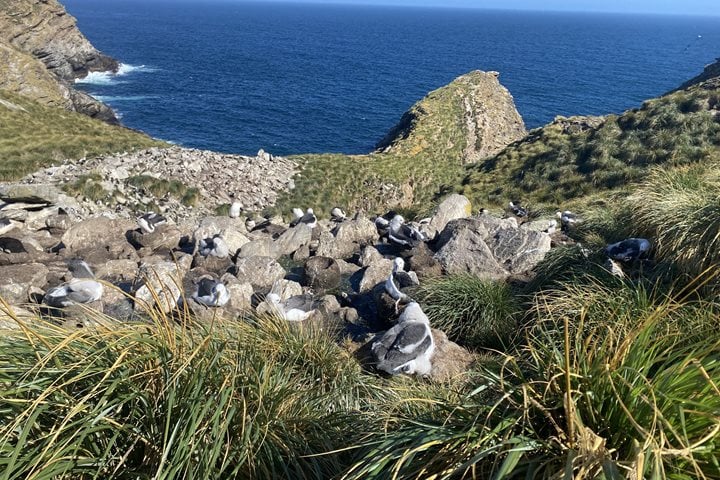We arrived in Right Whale Bay with a splash. We saw a small but majestic king penguin colony and nearby, a skua. Ferocious fur seals covered the land and caused a ruckus among the penguins as we cautiously hiked by. Along the way, we saw the remnants of a blue whale, as well as an explosive harpoon used for whaling many years ago. On our hike back to the Zodiacs, many guests took photographs near the large whale vertebrae that sat among the elephant seals.
We had a true taste of an expedition when we returned to the beach and found that our landing site was no longer navigable due to the enormous swell of the ocean. As true explorers, we marched over a snowy embankment to our new landing site, while fur seals watched from both sides. Luckily, National Geographic Explorer staff were on hand to keep the fur seals at bay.
After a delicious lunch of fish tacos and guacamole, we landed at picturesque Elsehul Bay. Guests chose to either take a Zodiac cruise or hike up the rim of the bay to get a closer look at the petrels and albatross nesting in the high grasses. From the Zodiacs, guests watched an abundance of birds—including grey-headed and light-mantled albatross—flying overhead. Nesting South Georgia shags and macaroni penguins could be seen along the cliffs. The trip was pleasantly interrupted by the arrival of a Viking vessel. The Vikings provided hot cocoa on the chilly ride. On the hike, guests got a bird’s-eye view of petrels, skuas, albatross, pipits, snowy sheathbills, and gentoo penguins. Although the climb was slick and rocky and took a considerable amount of effort for the climbers, it proved to be well worth it.
All in all, it was an amazing day. As we said goodbye to South Georgia, we were reminded of the amazing wildlife—both ferocious and furry—that we saw. In fact, the Grosvenor Teacher Fellows devised a scale to help us process the diverse, snuggleable (and not snuggleable) animals we encountered. When you think of a specific animal (i.e. baby king penguins, adult male elephant seals, etc.), you can use the scale to help you navigate the decision of how close you want to get to that particular animal (in an imaginary world, of course… we all know the naturalists highly discourage getting closer than 15 feet!). To help you, the teachers have provided several examples, below:
Christine: “There is no doubt that Oakum Boys (king penguin chicks) come in high on the
Jessi: “For me, the rockhopper penguin comes in at around a seven. Rockhoppers are the height of adorable, and I truly identify with their work ethic—especially when it comes to building nests. However, this scale measures
Paula: “The fur seals are for sure a low score! Besides their disgusting smell, they are very aggressive, and this
The beauty of the Snuggle Scale is that it is specific to each person using it. It can be used as a conversation starter when dinner discussion begins to lull and as an alternative to discussing Shackleton yet again. Enjoy!








